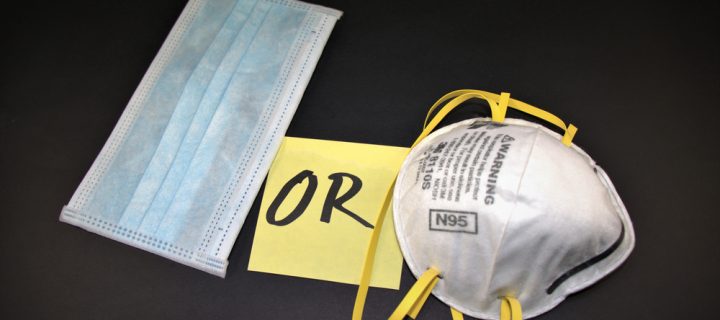When worn properly, both masks and respirators can help prevent the spread of respiratory illnesses.
COVID-19 is still circulating and in some places like Canada, public health officials are encouraging people to return to masking indoors as respiratory illnesses like the flu and RSV are being added into the mix. With several illnesses in the air that can cause damage, increased hospitalizations are striking the alarm as we head deeper into the winter season.
If you’re looking for a mask, you may want the best there is. What’s the difference between a mask and a respirator? Check it out.
Masks come in greater choices and can be made of cloth
Masks worn to help prevent the spread of respiratory illnesses like the flu or COVID-19 come in many shapes and forms. They might be made of paper like the blue surgical masks you can buy in boxes by the dozens, or they may be homemade from cloth. The key issue when it comes to both masks and respirators is to make sure that what you’re wearing fits well. Your mask should be comfortable and clean, and fit well over your nose and mouth.
A mask should also have a nose wire that allows you to shape it to around the bridge of your nose. for a snug fit. It should also be made from multiple layers of woven material if made from cloth.
Some experts advise wearing a disposable mask under a cloth mask for double protection. Make sure it fits snugly but comfortably.
Related: How people die in crowd surges
Respirators are made to meet certain standards such as N95s
Technically speaking, a respirator can potentially provide you with better filtration and provide you with a better level of protection if you wear it properly, compared with a mask. Popular examples of respirators include N95s and KN95s.
It’s also key to know that, according to the Centres for Disease Control and Prevention (CDC), in one study conducted throughout the pandemic, about 60% of KN95 respirators NIOSH evaluated didn’t meet the standards they are supposed to.
What’s the moral of the story? Be careful who you buy your respirators from and be sure that the product is legitimate and made to standard.
Again, as with a mask, your respirator needs to fit around your face snuggly but not be uncomfortable. It shouldn’t have exhalation valves as these will allow any potentially infected air to be shared with those around you.
When worn and made properly, NIOSH–approved respirators filter at least 95% of particles present in the air, making them one of the most effective facewear to prevent the spread of viruses.
According to a report on Reuters.com, the US will keep the public health emergency status of the COVID-19 pandemic in place. This will allow millions of people in the US to continue to receive free tests, treatments, and vaccines related to COVID-19.
If you’re unsure about masking or using a respirator due to a medical condition, talk with your doctor.
photo credits: Honeycruller/Shutterstock.com












